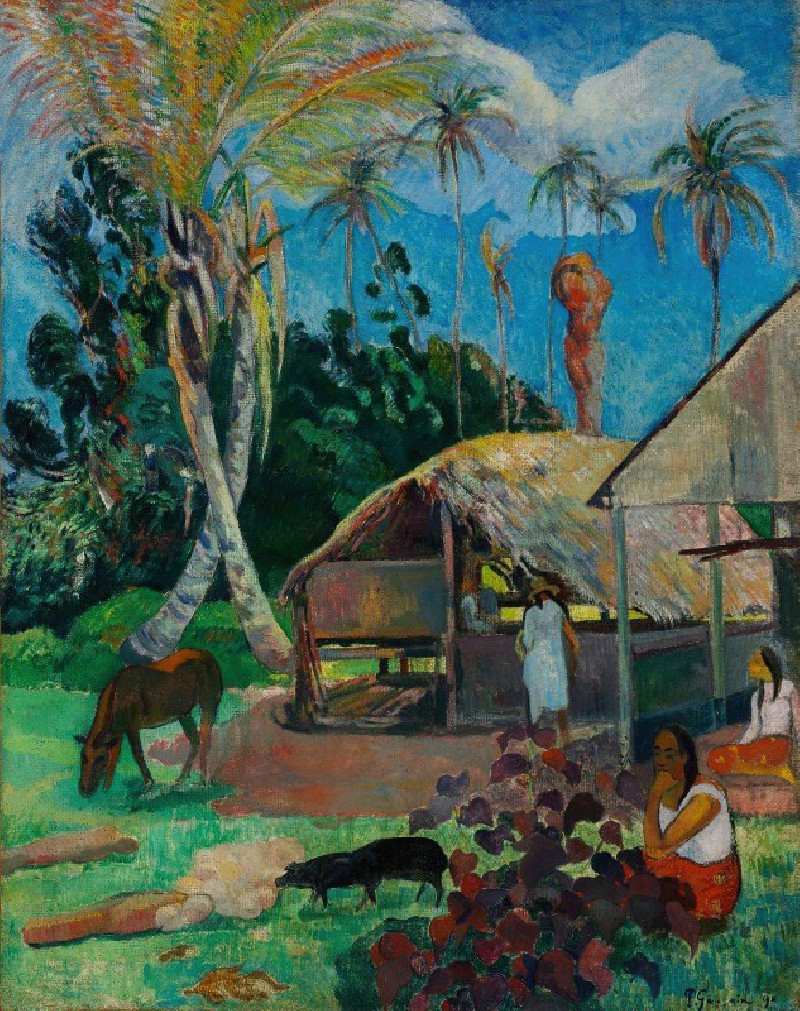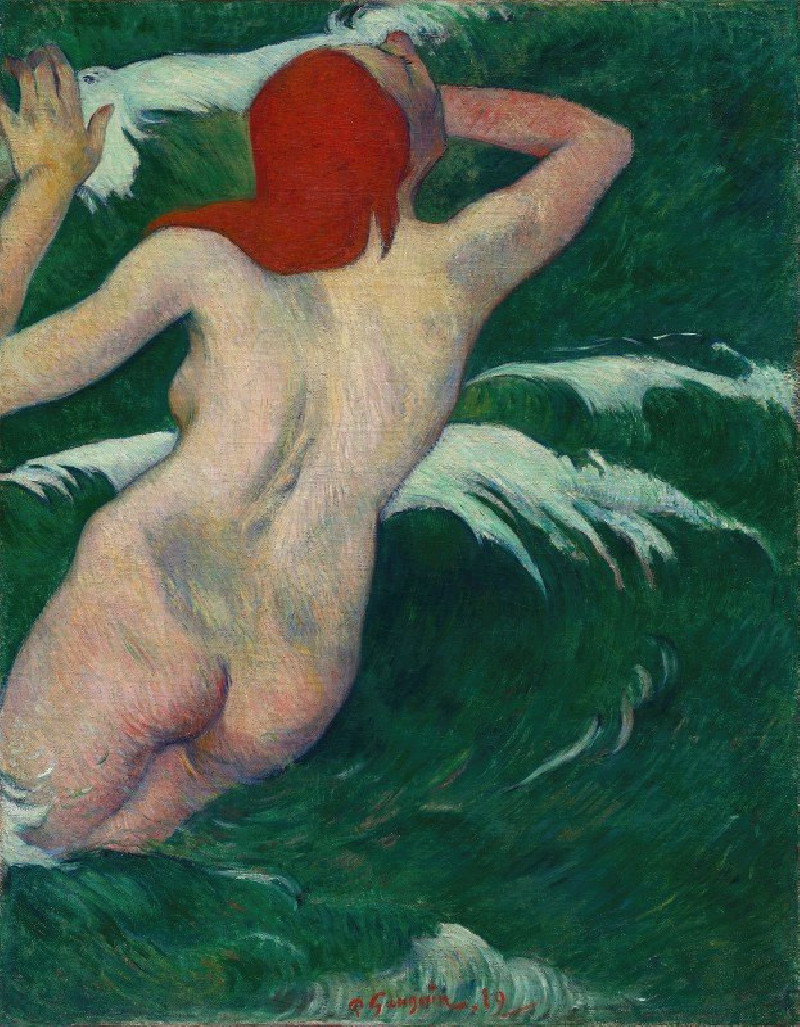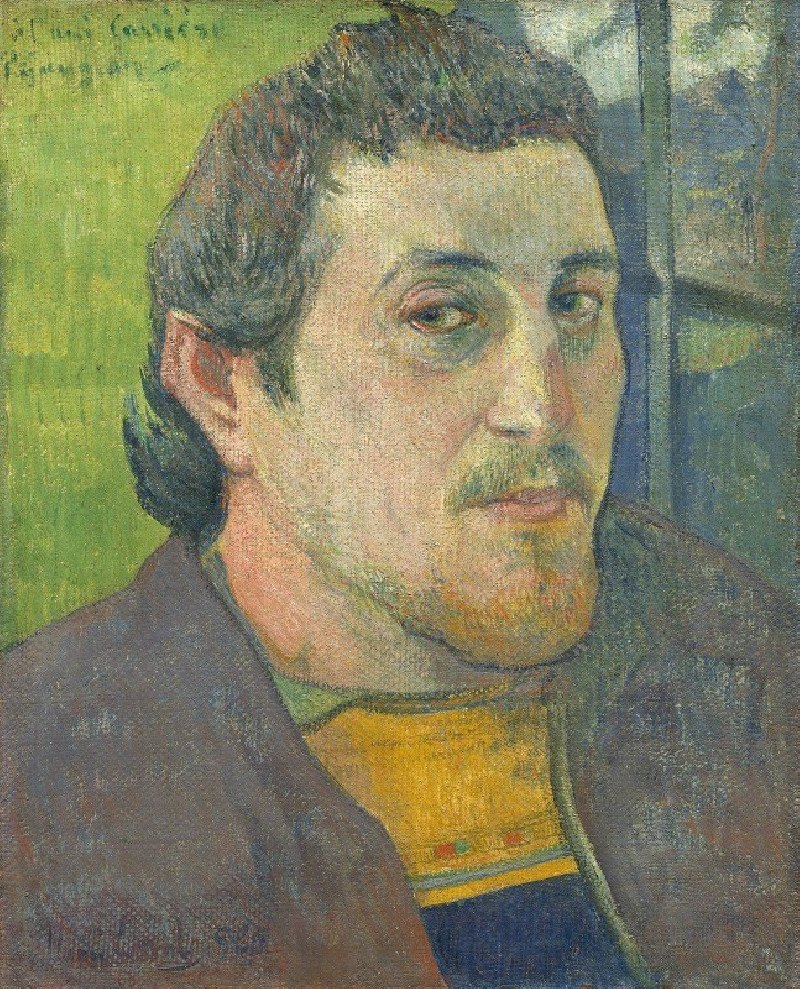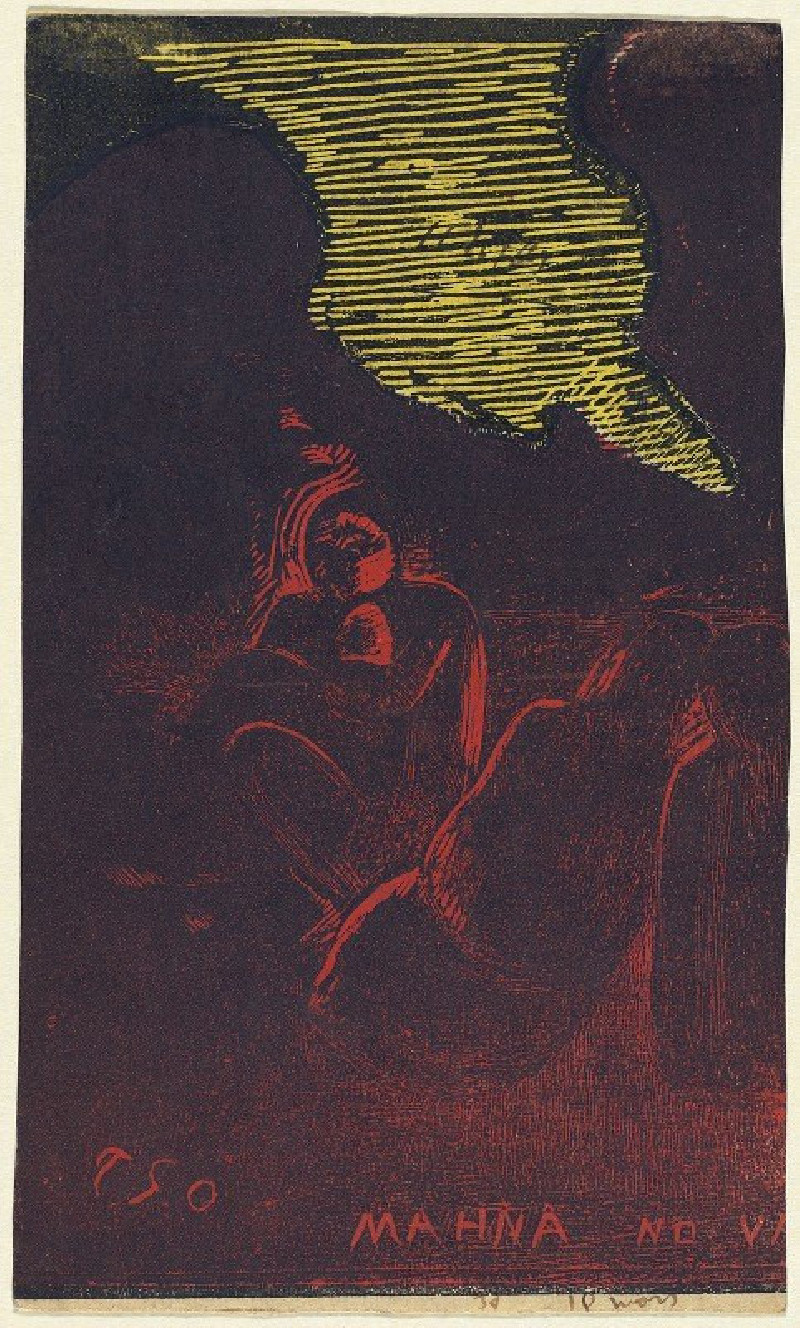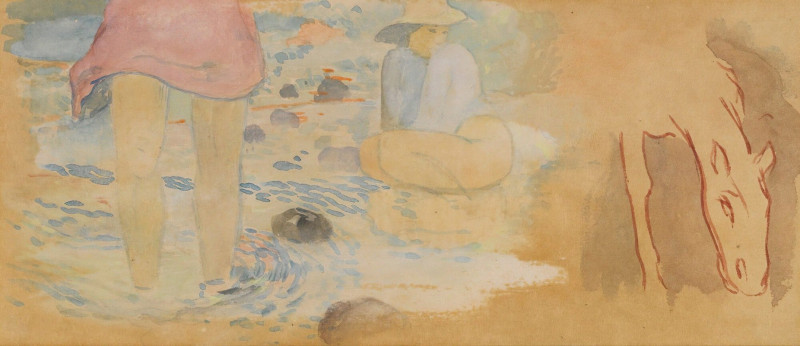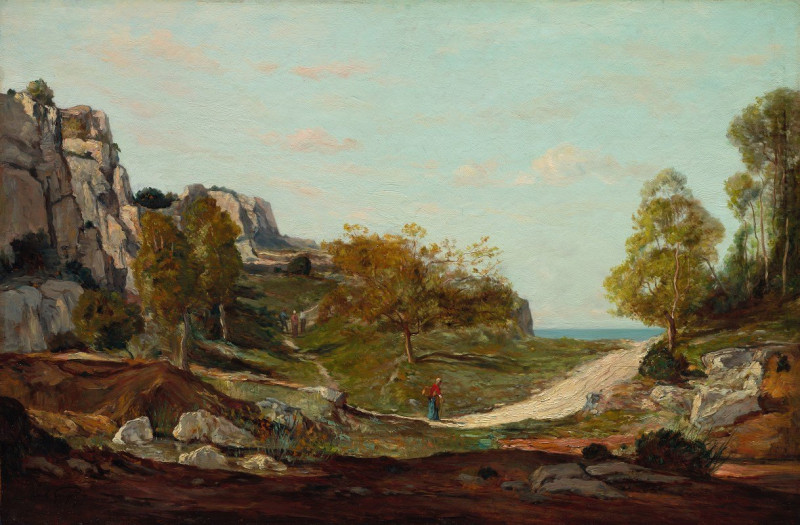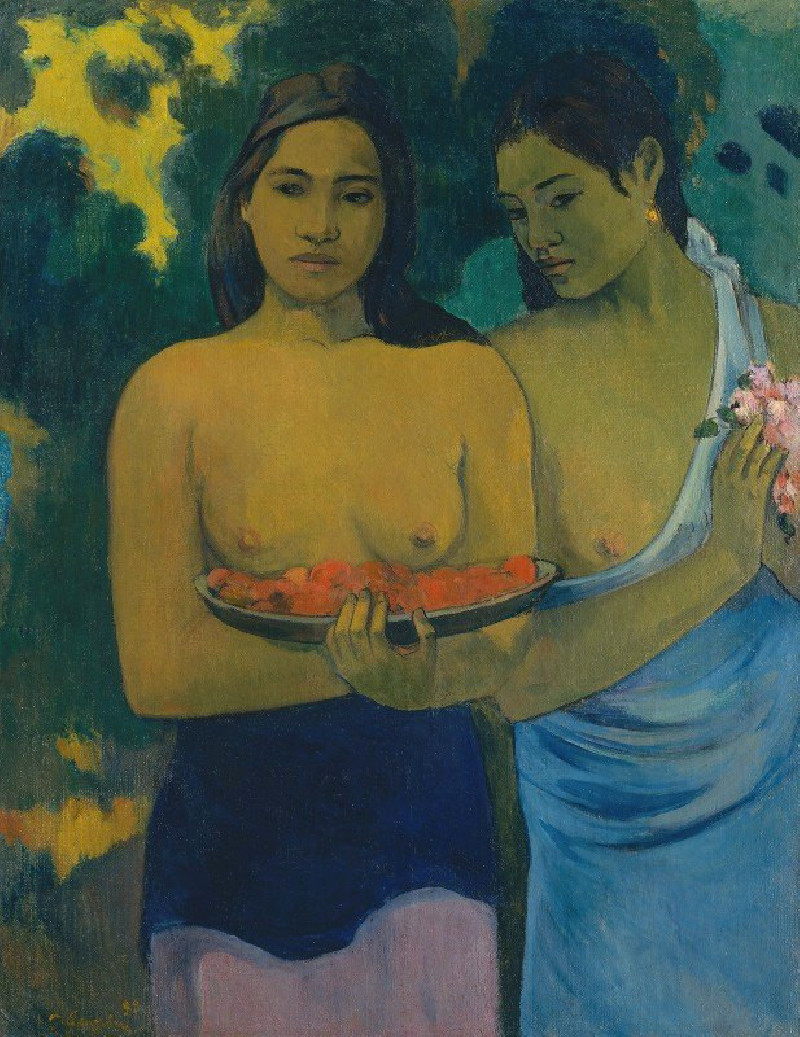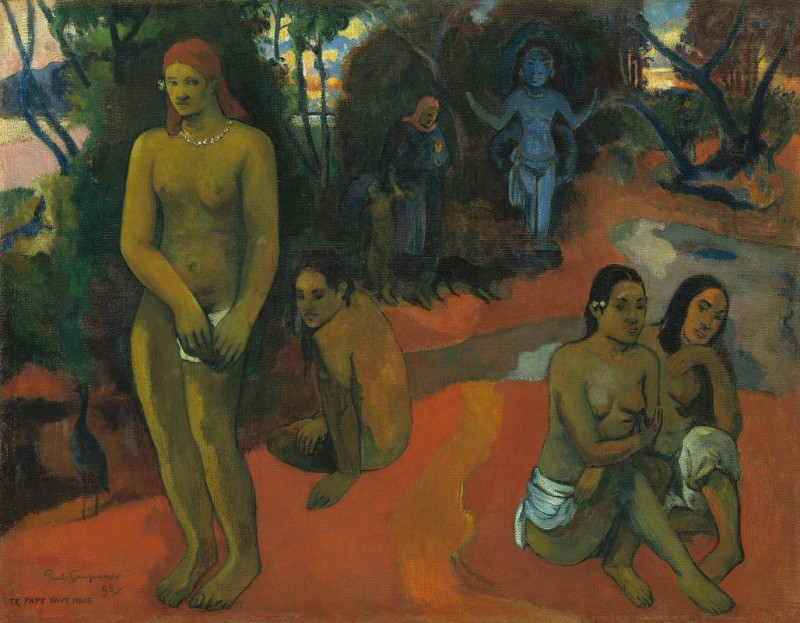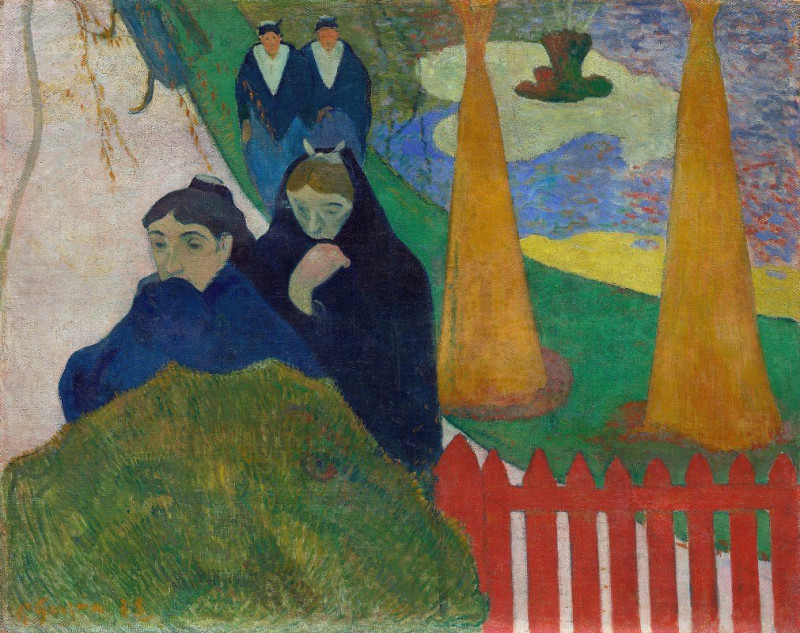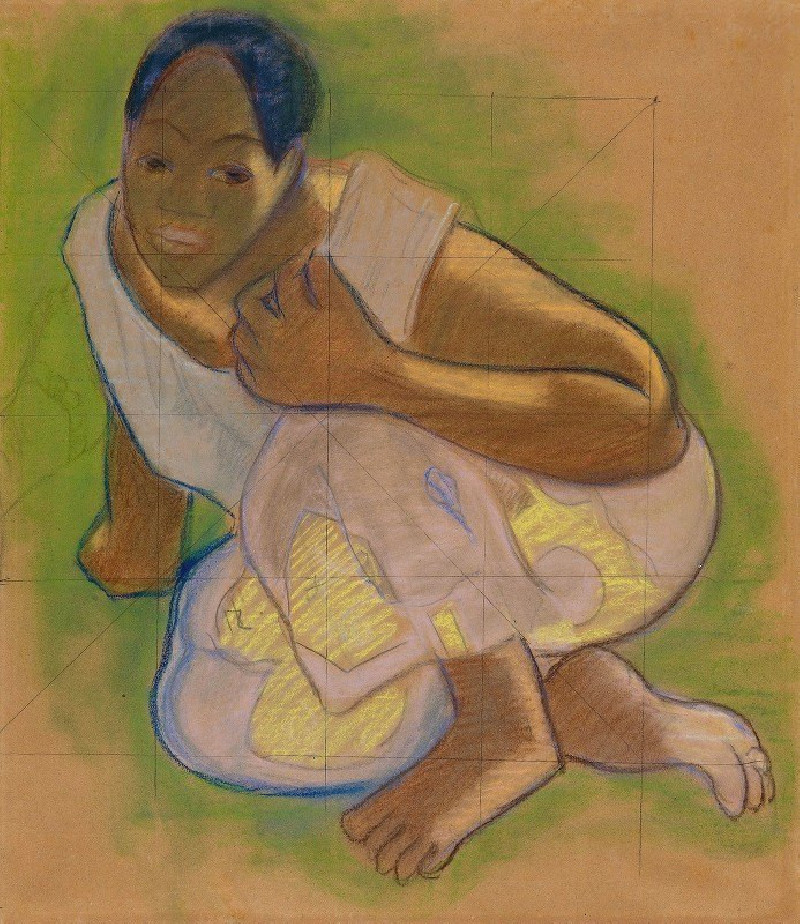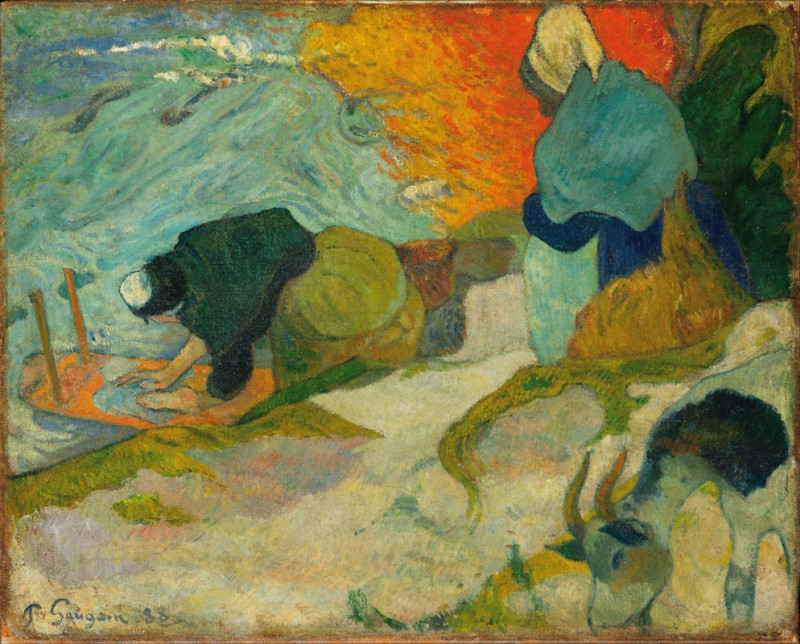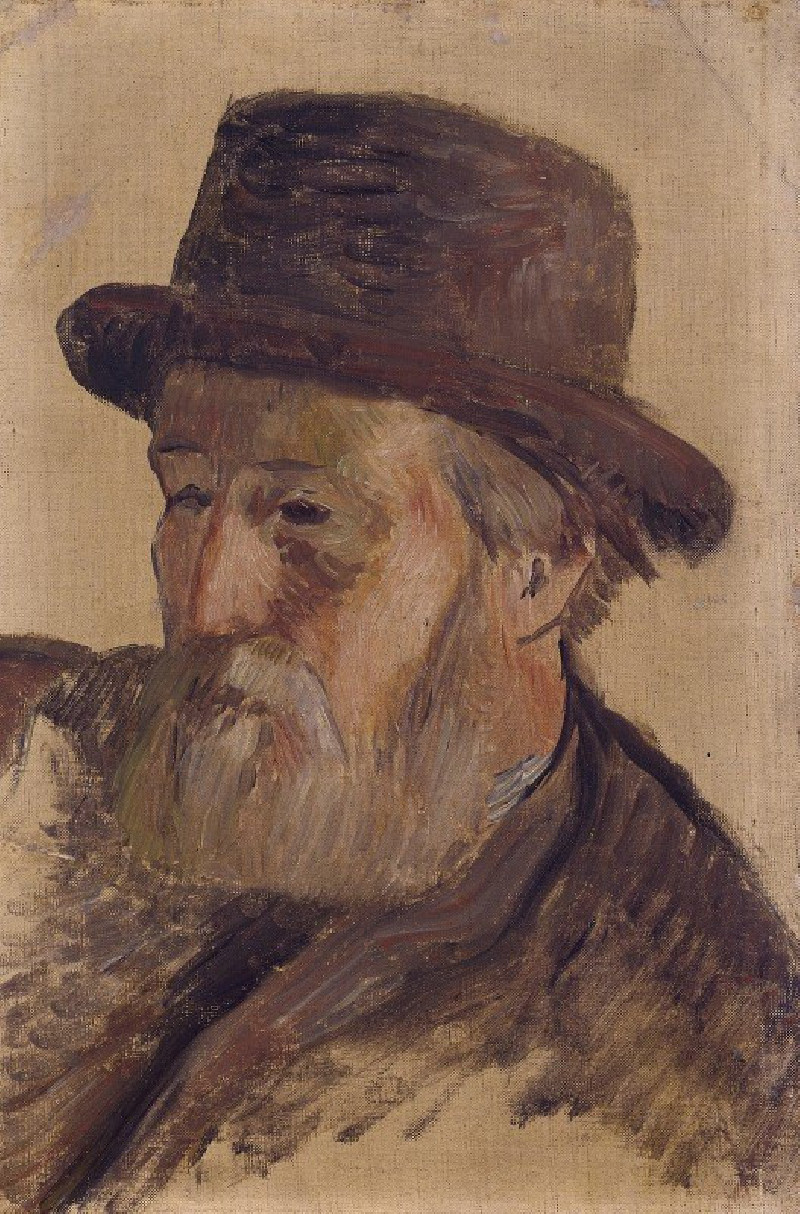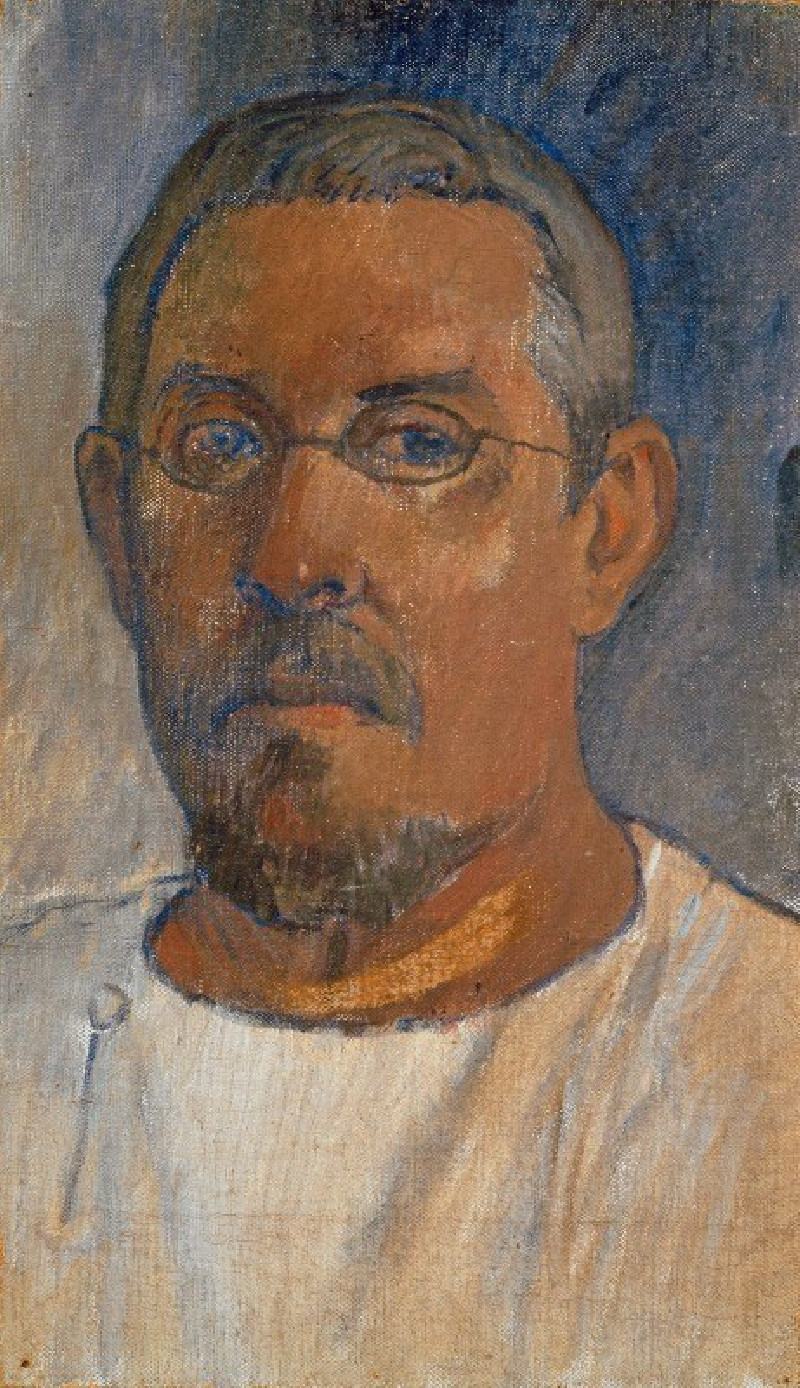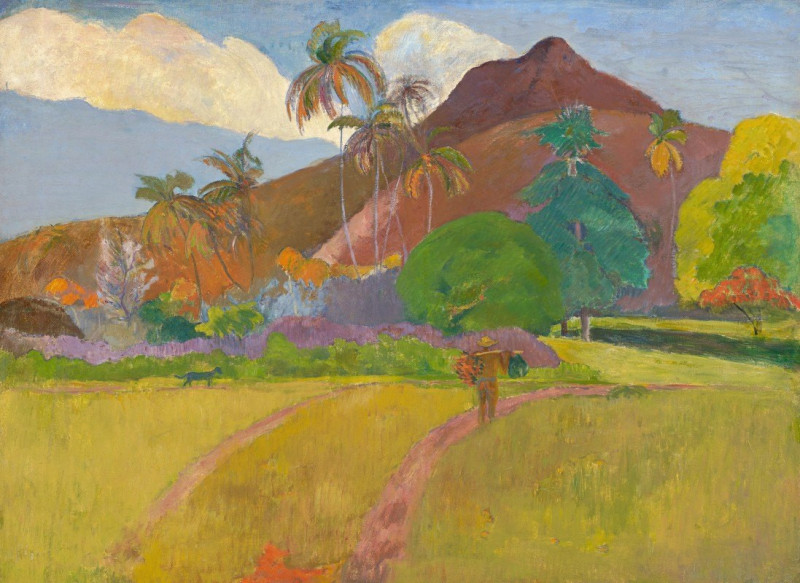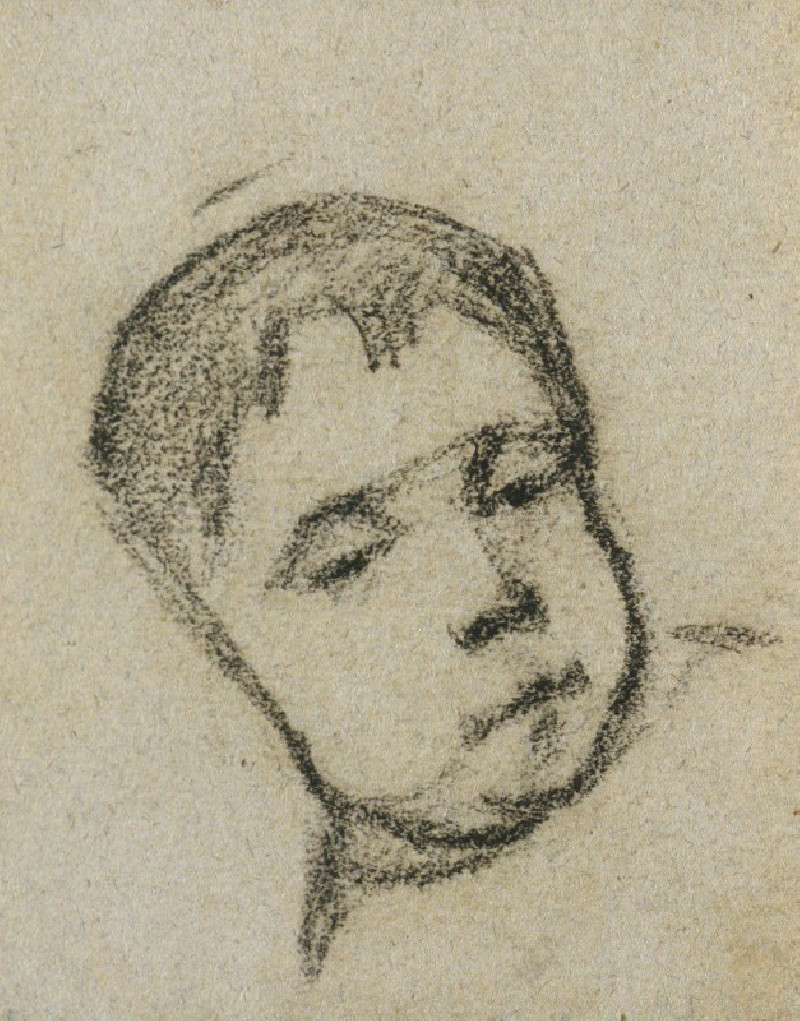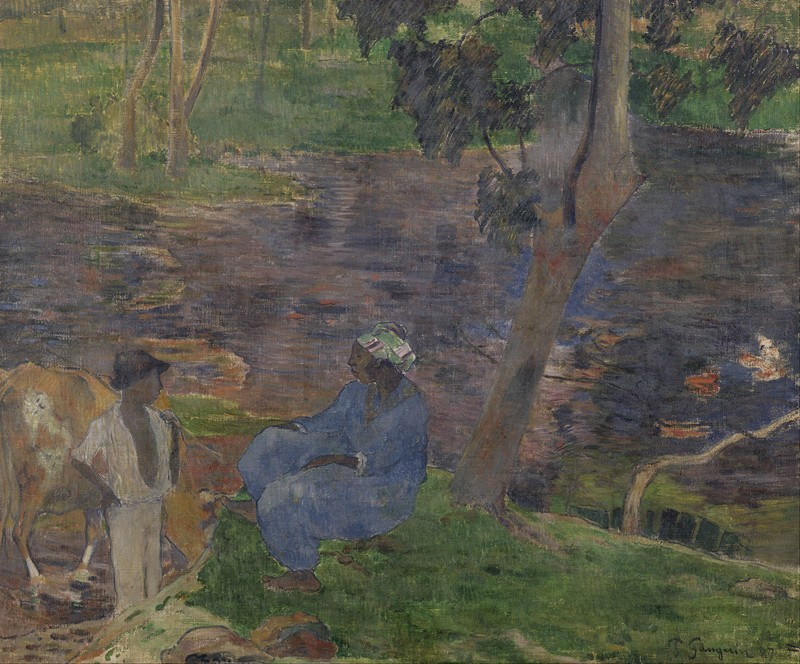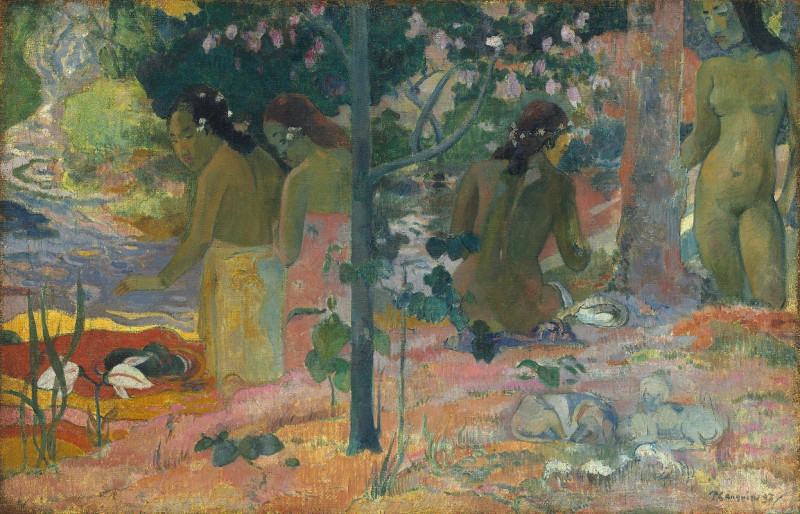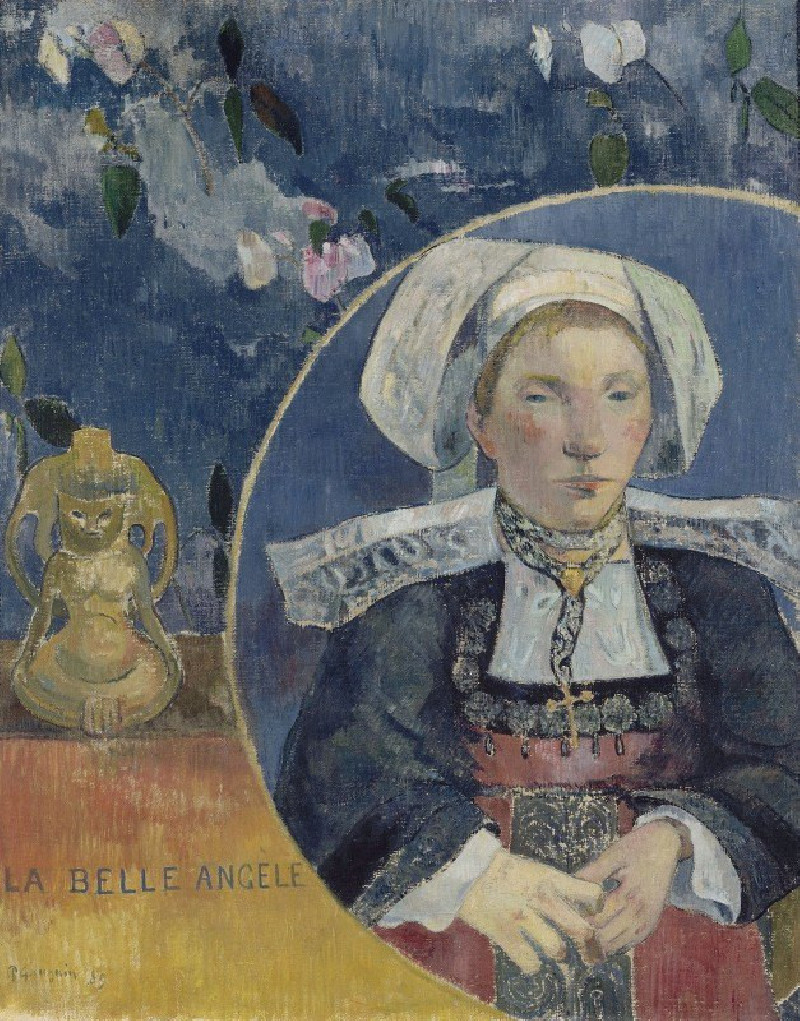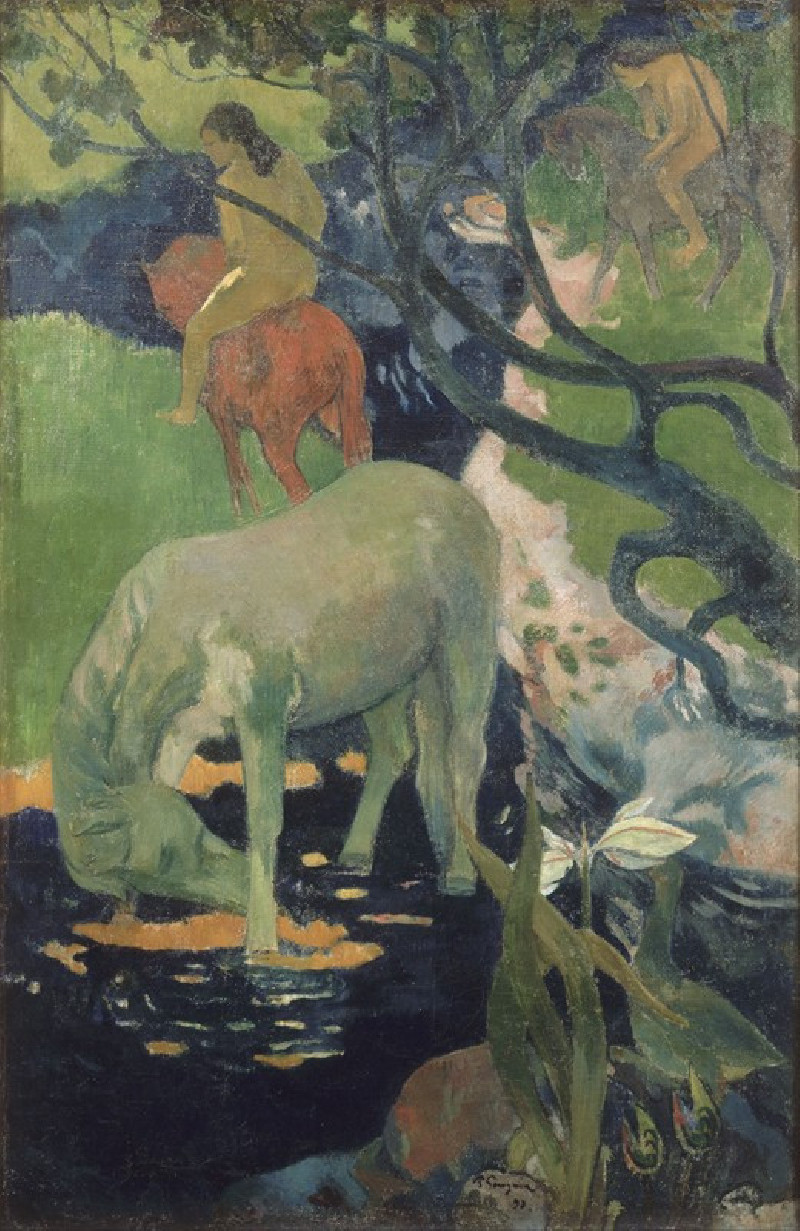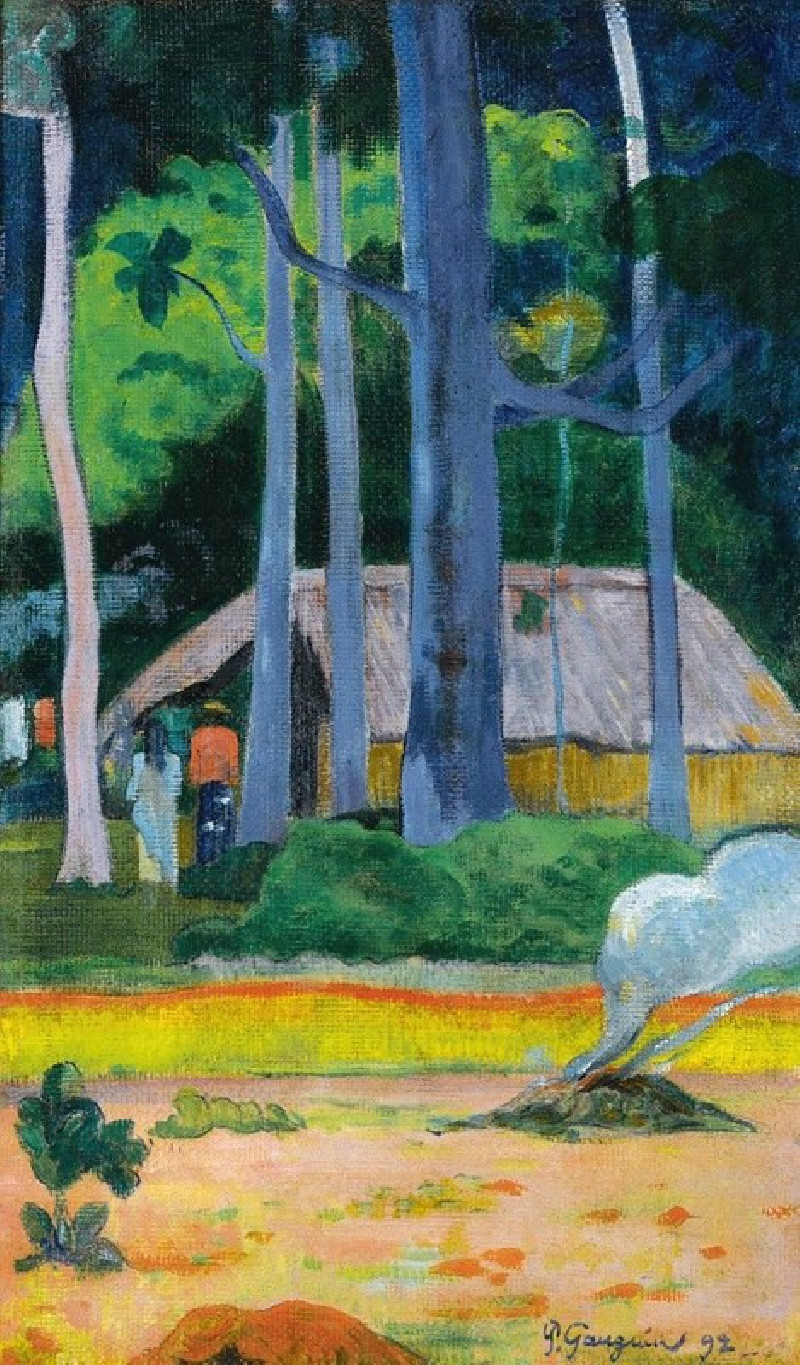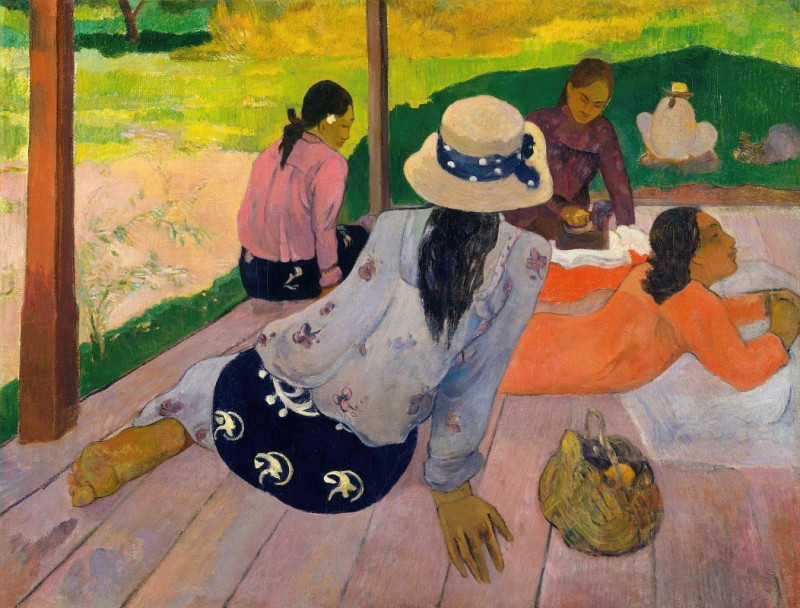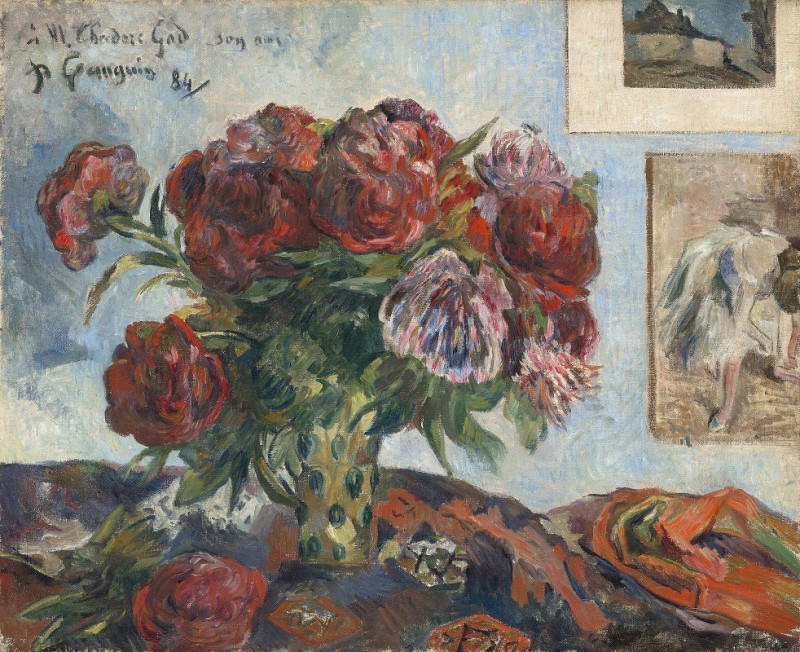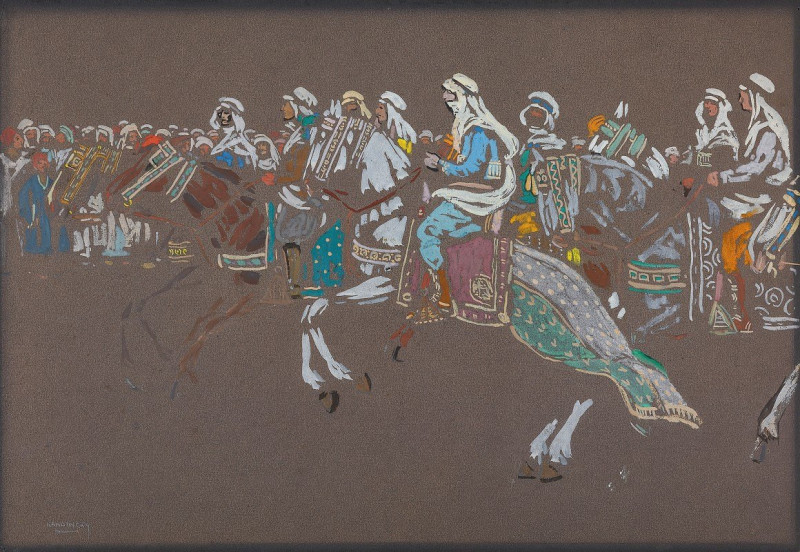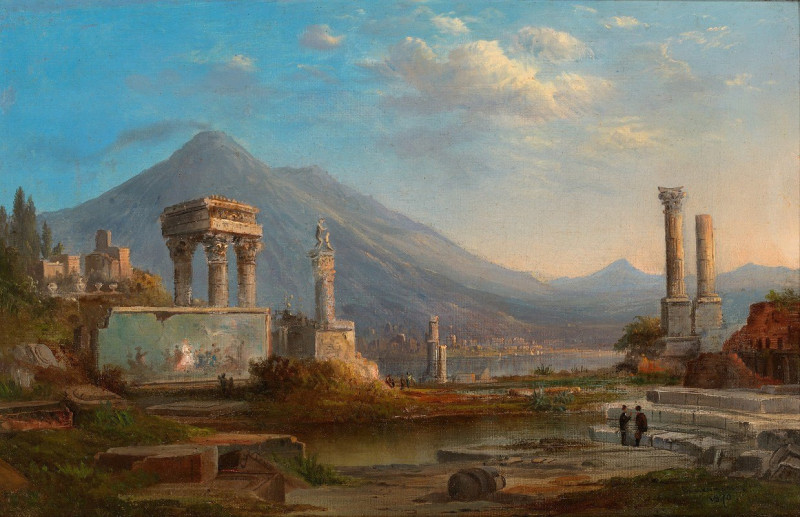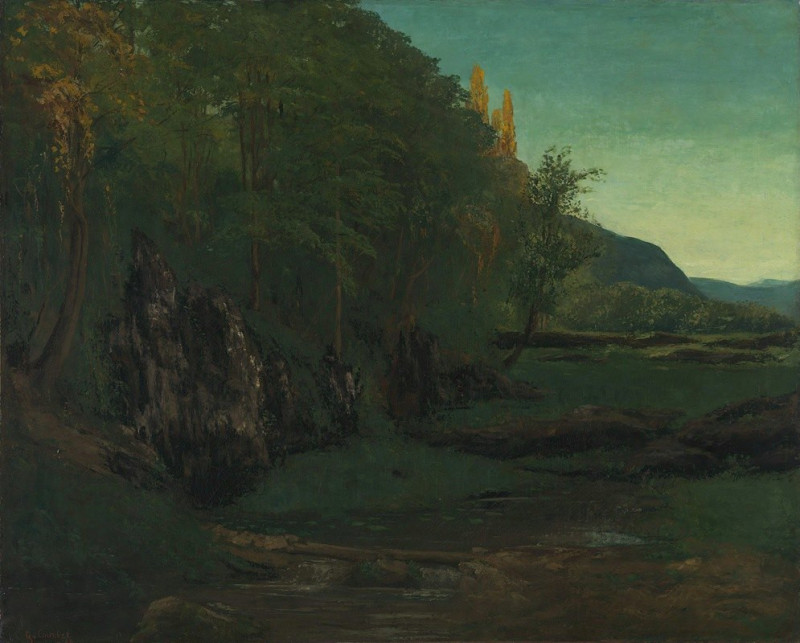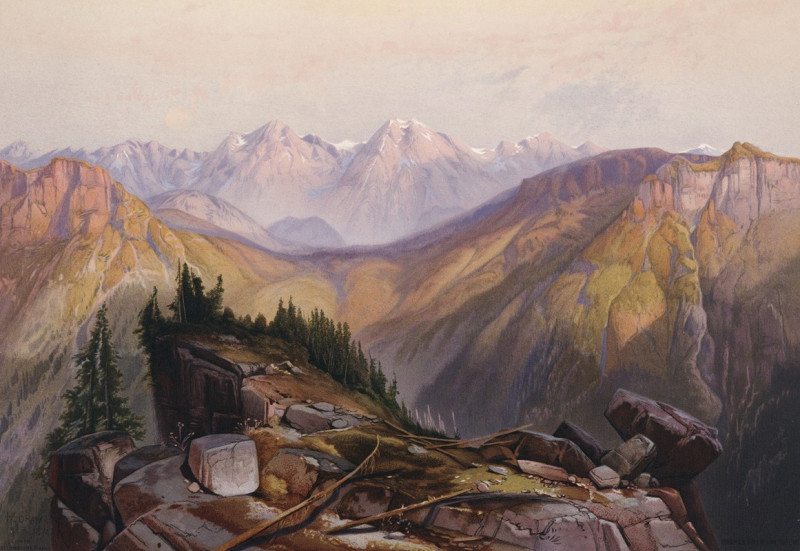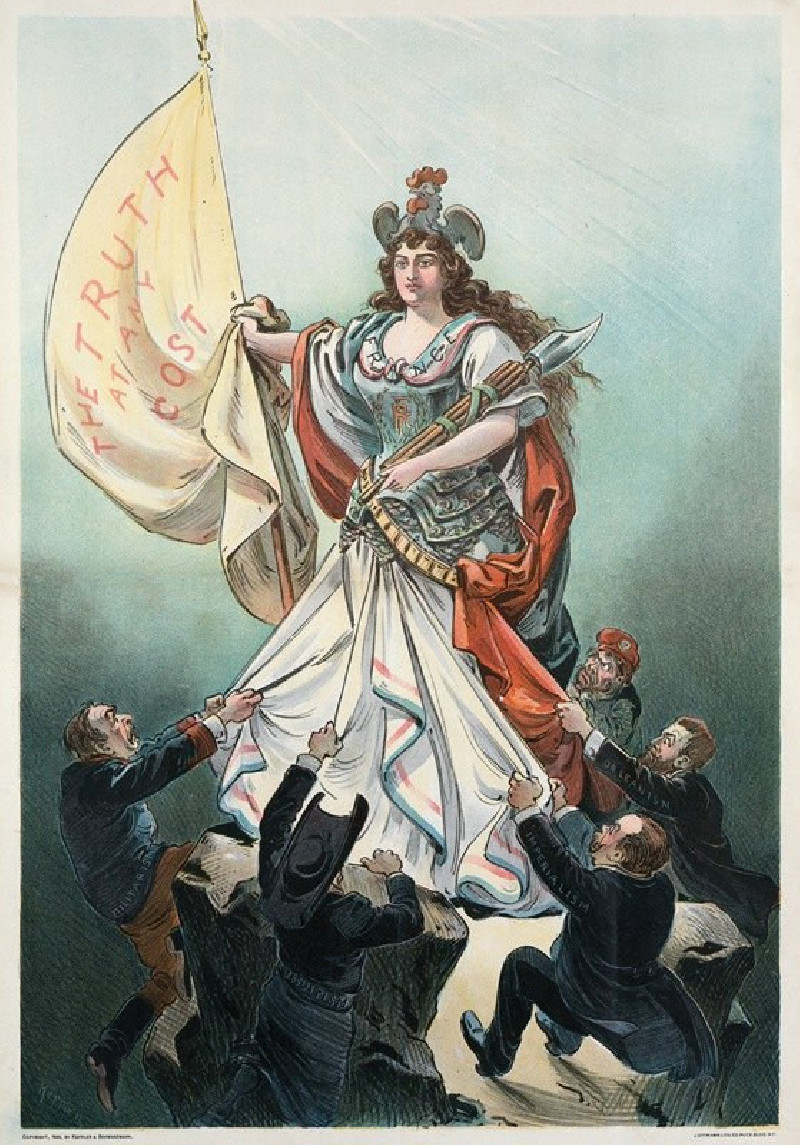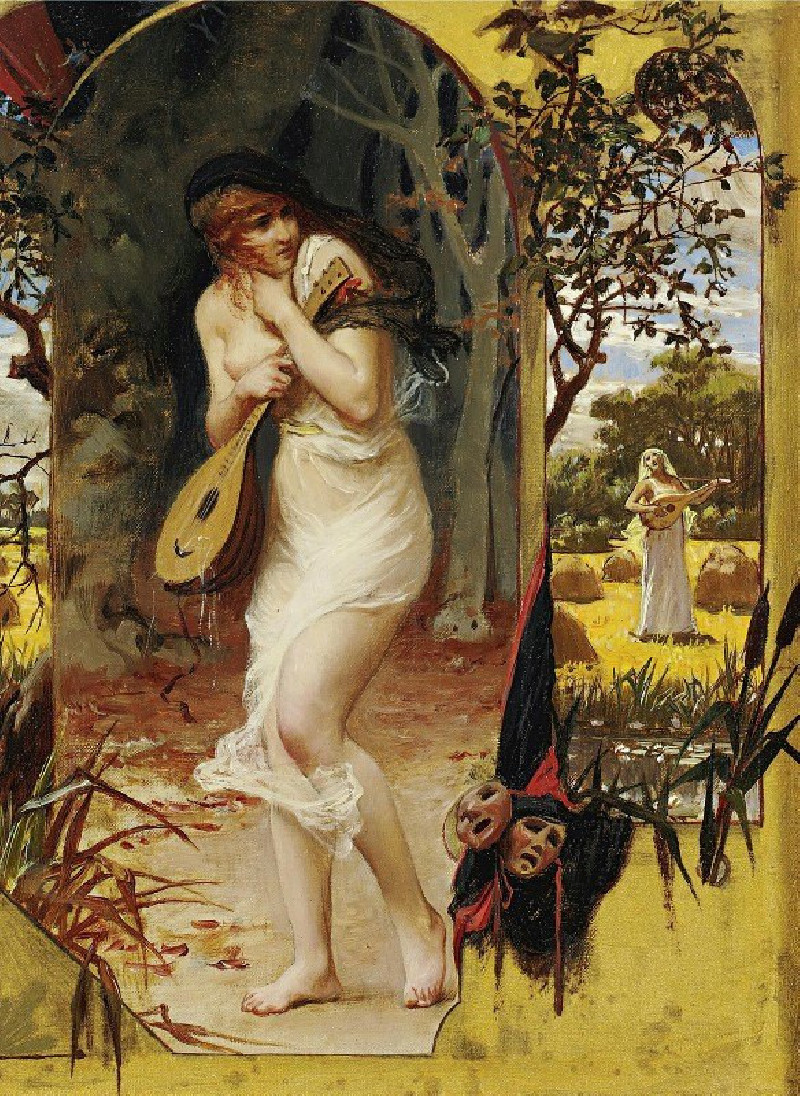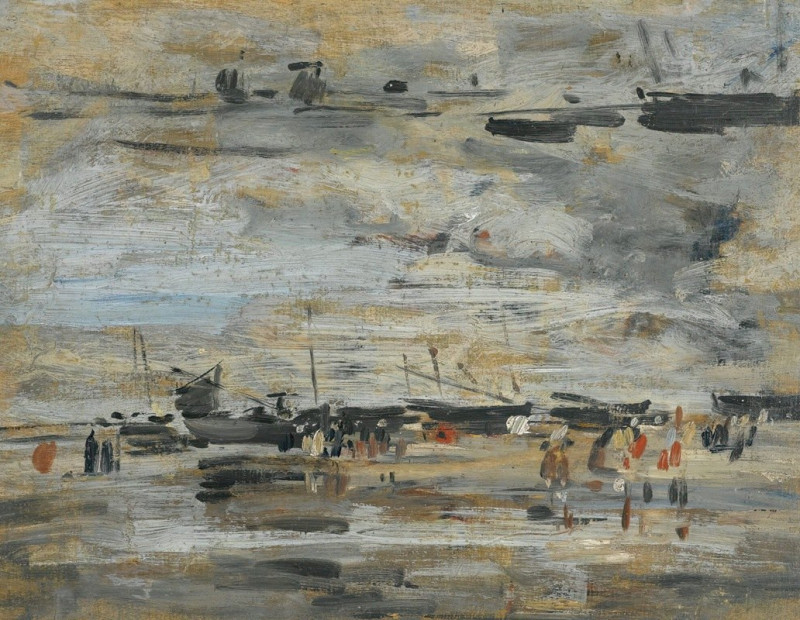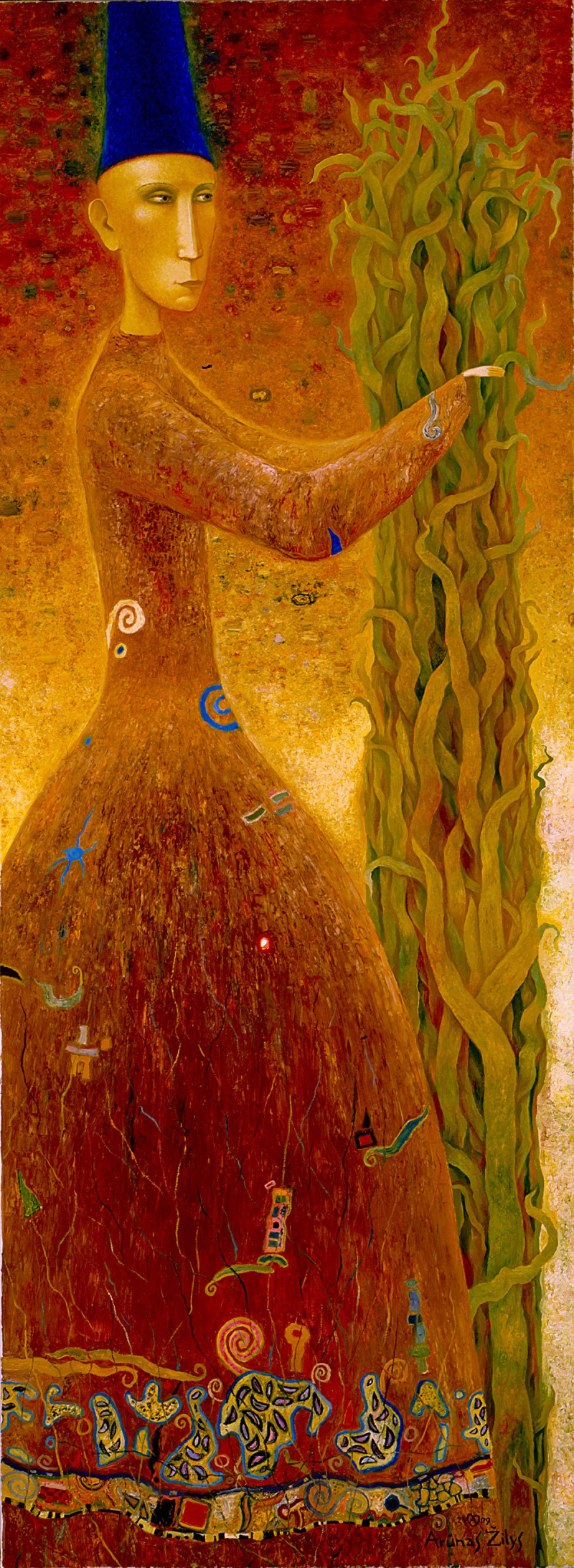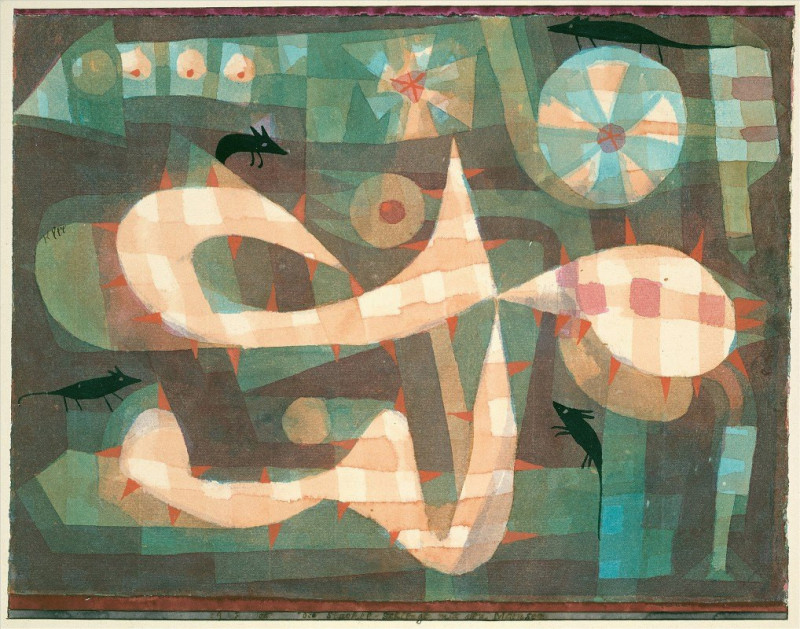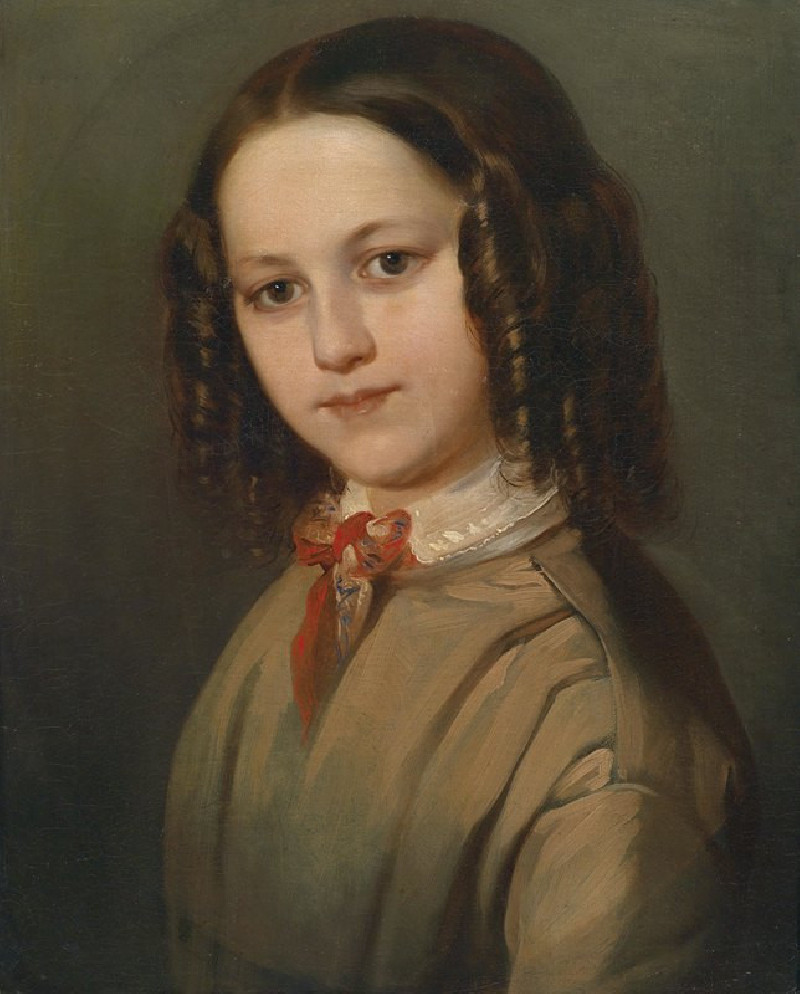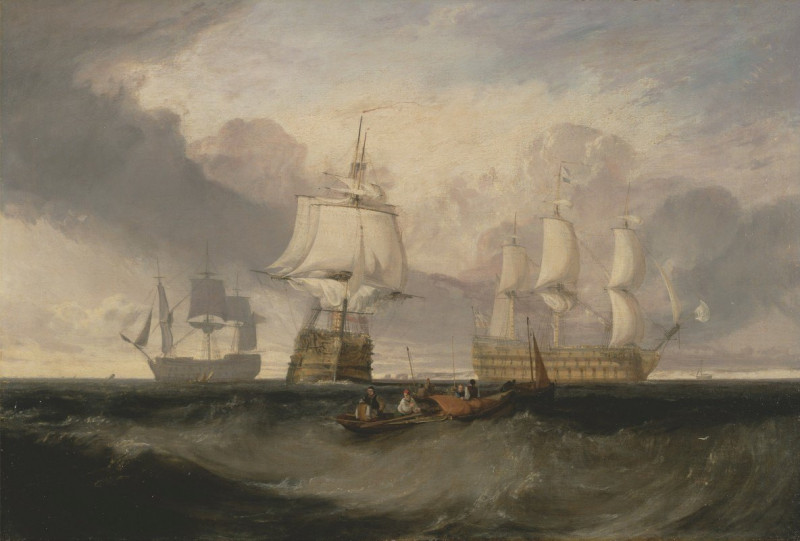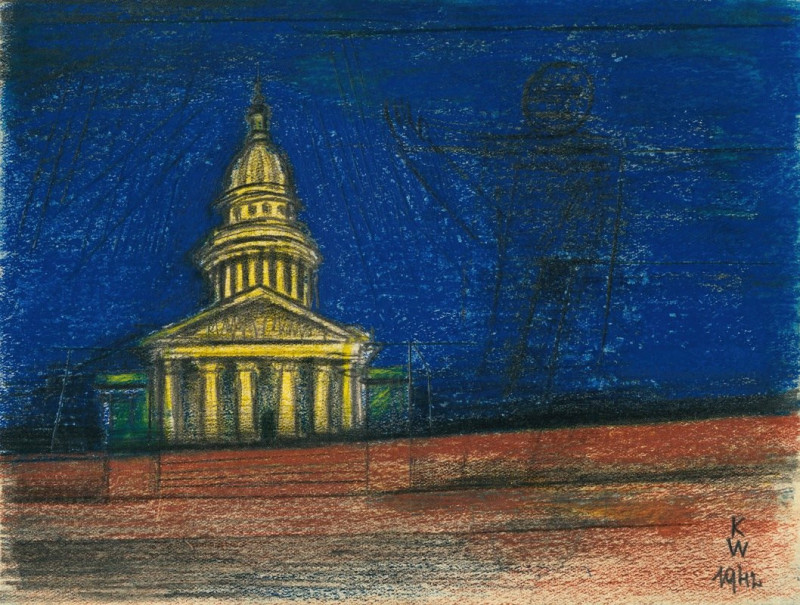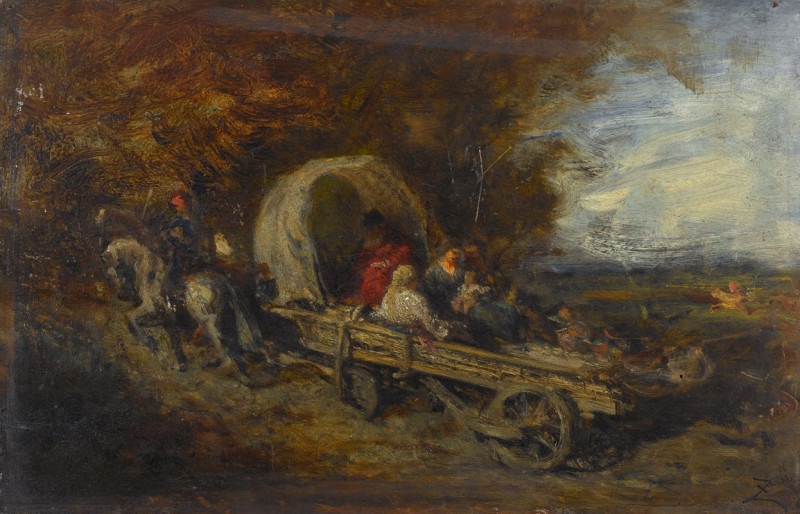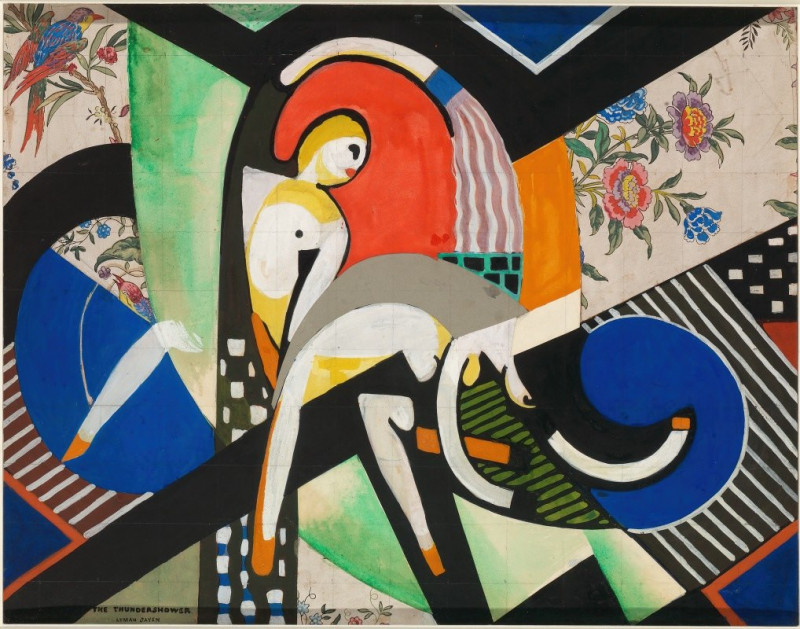Haystacks in Brittany (1890)
Technique: Giclée quality print
Recommended by our customers
More about this artwork
Paul Gauguin's "Haystacks in Brittany," painted in 1890, captures the essence of rural life with a rich tapestry of colors and bold compositions, hallmark traits of the Post-Impressionist period. This landscape features the countryside of Brittany, a region in France that fascinated Gauguin and influenced much of his work during this period.The painting presents an elevated view of the fields during what appears to be the early autumn. The scene is dominated by several large, rounded haystacks, each rendered in deep shades of red and brown, which suggest the warmth and earthiness of the harvested fields. These grand forms anchor the composition and draw the eye across the paneled landscape.In the foreground, Gauguin intriguingly includes a small group of figures: women in traditional Breton attire, accompanied by cows. These figures provide a stark contrast in scale to the monumental haystacks, emphasizing their grandeur and the vastness of the landscape. The women and cows are near a flowering field, which adds splashes of white and green to the palette, complementing the robust tones of the haystacks.Beyond the immediate fields, one can see a patchwork of green pastures, a distant village with nestled houses, and a hint of rolling hills that meet a soft, overcast sky. This vista encapsulates the serene, rhythmic beauty of Brittany’s rural terrain.Gauguin's use of flat planes of color and distinct outlines reflects his departure from naturalism and an embrace of a more symbolic and abstract representation. "Haystacks in Brittany" is not just a simple portrayal of a landscape; it is imbued with the emotional and spiritual qualities that Gauguin sought to express through his innovative approach to color and form.
Delivery
Returns
Eugène Henri Paul Gauguin was a French Post-Impressionist artist. Unappreciated until after his death, Gauguin is now recognized for his experimental use of color and Synthetist style that were distinct from Impressionism. Toward the end of his life, he spent ten years in French Polynesia. The paintings from this time depict people or landscapes from that region.


